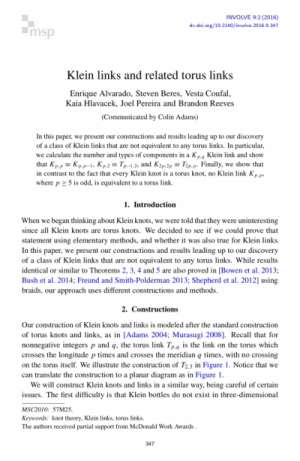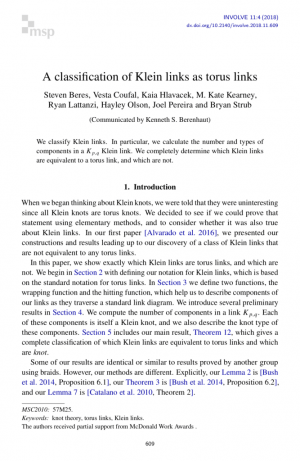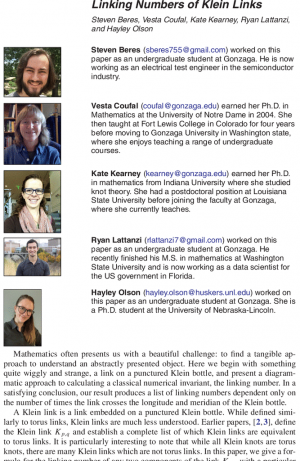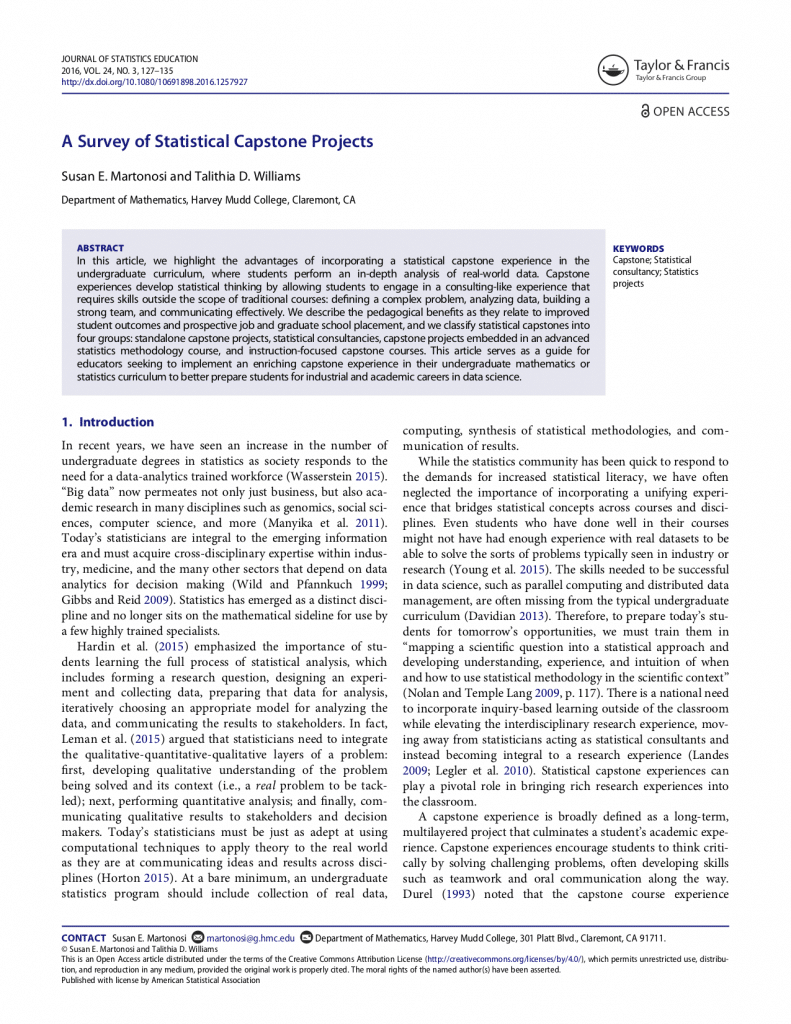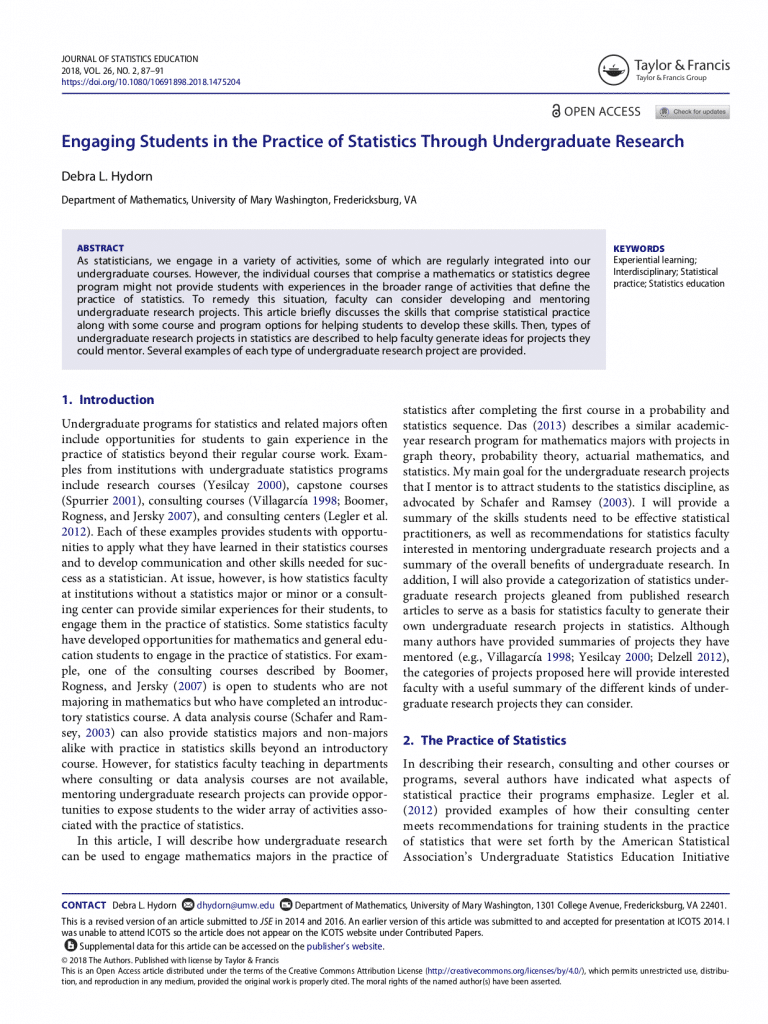What Counts as Math Research?
December 7, 2022
Learning to write mathematical proofs is no different than learning to write papers in any other discipline in that it is an exercise in learning to write using a specific style and with a specific audience in mind. I strongly assert that courses requiring students to write mathematical proofs should meet any university’s Writing Across the Curriculum (WAC) requirements.
I wanted to teach my proof-based Fundamentals of Mathematics course with a WAC designation but felt overburdened by the university’s requirement for students to “integrate appropriate primary and secondary research in their writing.” Given that my own PhD dissertation would definitely not have been accessible to me until a few semesters into grad school, I had no idea how I could get my undergrad students to conduct secondary research and even less of a clue of how I could possibly expect them to conduct primary research. While I originally argued that this was impossible in mathematics, I realize now that my strict interpretation of what counts as mathematical research was incorrect!
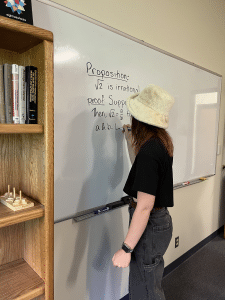
Primary research in pure mathematics consists of formulating a statement and determining whether or not that statement is true. This is done by playing around with examples, exploring definitions, and ultimately proving or disproving the statement. In proof-based courses, I regularly ask students to determine whether a statement is true or false, and then prove their conclusion. To them, this is primary research. While these results are not likely to be new to the mathematical community nor actually publishable, through this exercise, students are still able to get an authentic experience in primary research, as long as the student does not know the results in advance. In fact, even lower-level courses may contain an aspect of primary research, such as when students verify a formula is correct or determine a general version of a common computation.
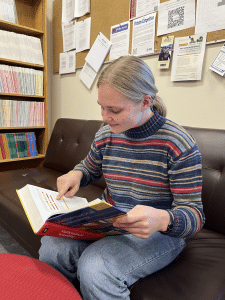
Secondary research in pure mathematics consists of reading research papers to learn about known results, definitions, and examples, a daunting task for an undergraduate. Much of the undergraduate mathematics curriculum was discovered far enough in the past that the original source material uses different notation or terminology than today; moreover, the original source may require fluency in a foreign language. For these reasons, many undergrad courses may not be able to task students with reading original research. Nonetheless, reading and sharing about mathematical papers can easily be incorporated into proof-based courses. For a student just learning a topic, even reading the course textbook can be just as meaningful as reading a research paper, and could be considered secondary research; reading and referencing textbooks is indeed a common practice in my own research.
When I’m asked by the University to renew my course’s WAC certification, I will explain how my students engage in primary research every week when I present statements they are tasked to prove or disprove. These same students participate in secondary research every day when they read new information out of our textbook. I encourage you to rethink what it means to do research in undergraduate courses, and maybe even teach them with a Writing Across the Curriculum designation, as it is likely that you are already engaging your undergraduates in this style of learning.
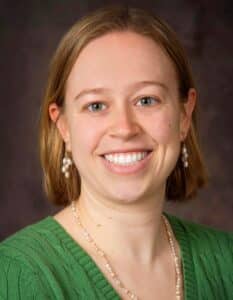
Dr. Shultis is an Associate Professor of Mathematics at Gonzaga University in Spokane, Washington. She earned her B.A. in mathematics and chemistry from Scripps College, where she participated in undergraduate research in both fields. Her PhD is from the University of Nebraska-Lincoln in commutative algebra, and her other research interests include topology, graph theory, and projects involving both algebraic and biochemical aspects.
Learning-Inspired Research
October 25, 2022
There is a lot of advice out there about how to start an undergraduate research (UR) project. Most of it begins with having a good question. They say that a good question is key to a good project. The problem for me was…I didn’t have a question to start with. I tried to come up with one, even a bad one, from my own research and failed; I could not find a way to reformulate something to make it accessible to an undergraduate. And yet, for many reasons, I really needed, and wanted, to work with undergraduates on research. I even tried looking at topics different from my own research, but this left me uncomfortable; I didn’t know the background well enough and I wasn’t excited by the project.
As I kept trying, I eventually realized that I was only making myself frustrated. As things were getting worse, not better, I managed to stop and rethink what I was doing. I asked myself: Why do UR? Why do math? The answer for me is: I like learning new things, exploring ideas, and working out solutions; I like being a student and playing with math problems. With that in mind, I decided to set aside the grand idea of UR and concentrate on what I had always loved: doing math and learning!
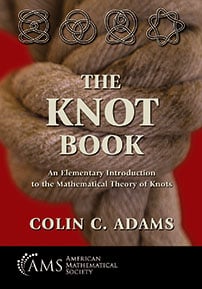
For a number of reasons, I chose to learn about knot theory. As a topologist, it’s both in my field of study and of interest to me. At its most basic, knot theory is accessible to undergraduates… and it looked fun! So, I asked for suggestions of a good introductory book for undergraduates. Once I had a book, I recruited five students to do a reading course in the summer; we met once a week for an hour. In preparation for each meeting we would read the next section and attempt the exercises. During our meeting we’d discuss any questions and either present or work together on the exercises. We had a lot of fun! With no expectations for outcomes, we were able to simply enjoy learning new stuff and playing with ideas. I was comfortable with my role as student/leader and happy not being the expert. This was exactly what I needed for my own enjoyment of mathematics!
In the back of my mind, I still wanted to grow this into an UR project. I was intentional about educating myself on the topic: I attended talks, courses, workshops, and conferences about knot theory; I sought out and talked with people in the field; I taught both independent study and intro courses on the topic. Most importantly, I continued reading and playing with knot theory ideas alongside students.
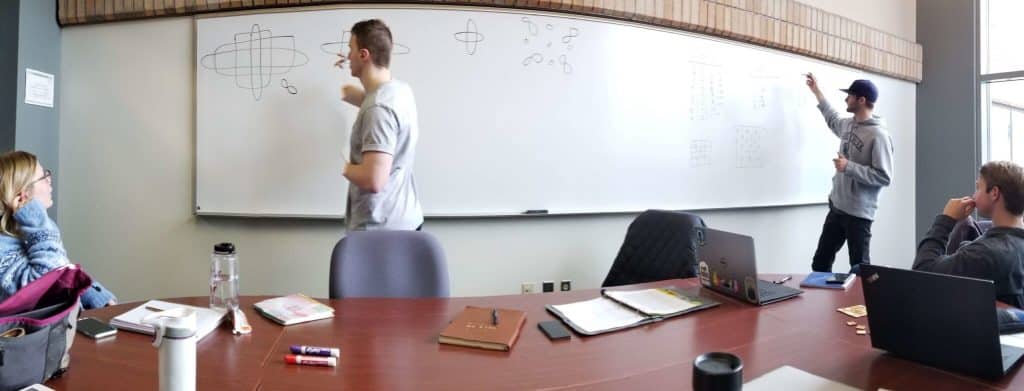
My work with students gradually evolved from reading, to exploring on our own, to a research project. Twelve years after I first started reading a knot theory book with students, we have published three papers and have submitted a fourth. Twenty-four students have worked with me during that time, some for just one semester, others for up to four years. I’ve even been able to provide some monetary support to students through small grants. The students have given numerous talks at conferences, even at the national level. Three of them have won undergraduate talk awards. Some of the students participated in REU’s, and several went on to graduate school. Three other mathematics faculty have joined the project, including a knot theorist. An impressive record for my department and school!
Then find a way to do what you love and do that with students. If you are like me, and what you really love is learning something new, then I urge you to try what I did: take away the pressure to produce, and just enjoy learning. Give it time and be patient. Doing work you enjoy and letting it progress naturally will lead to a successful project.
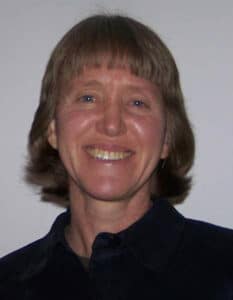
Vesta Coufal teaches at Gonzaga University, a liberal arts institution in northeastern Washington state with about 5,000 undergraduates. The mathematics department has grown from graduating about 16 mathematics majors per year when she started this project, to now graduating approximately 25. The teaching load is roughly three-three, so faculty do not have a lot of free time during the school year for research. Undergraduate research was not common in the math department, and there were some skeptics when Dr. Coufal started, but it is now widespread, accepted, and encouraged. Dr. Coufal views both her project and the changes at her school as success.
A Simple Model for Undergraduate Research in Statistics
September 4, 2021
Our statistics majors at St. John Fisher College are required to do a research project as the capstone element of their bachelor’s degree. As much as possible we let the research focus be student-driven so that it reflects the student’s abilities and interests. Over the last several years the research projects have clustered pretty naturally into two types: statistical research and data scientific research.
Statistical Research
Projects of this type involve basic statistical research, and can come in several forms:
- Explore and test properties of a statistic under manipulated conditions
- Compare the performance of a family of statistics that differ in mathematically subtle but theoretically interesting ways
- Develop an adjusted statistic that addresses a theoretical or empirical deficiency and evaluate it in a Monte Carlo study against the original statistic
- Develop and test a new statistic or statistical method to meet an analytic need in some field or in some type of data
Statistical research draws on several content areas of the undergraduate’s major studies, including the mathematical underpinnings of statistics, theoretical aspects of statistics, and Monte Carlo methods. Research problems of this type should be grounded in past work, and therefore require substantial literature review. Assessments of statistical research projects generally target outcomes such as: problem statement development, literature review quality, mastery of Monte Carlo or other appropriate simulation methods, general coding skill, and quality of the final paper and/or presentation.
From our experience, students who are a good fit for basic statistical research:
- like the mathematical/theoretical aspects of statistics
- have less well-developed disciplinary interests
- are interested in deductive/confirmatory/experimental work
- are comfortable with the “tidiness” of data created through simulation methods
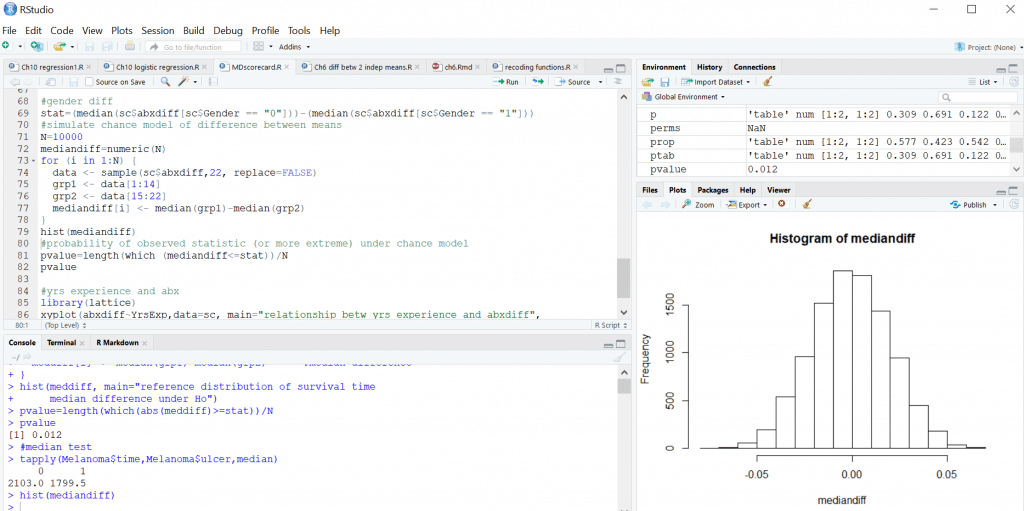
Data Scientific Research
Projects of this type involve applying statistical methods to disciplinary questions using disciplinary data, and can come in several forms:
- Data wrangling, including scraping websites for data
- Statistical learning or modeling
- Data mining/visualization
Data scientific research draws on several content areas of undergraduate statistics, including database operations, data wrangling, statistics and models for prediction and classification, literacy in disciplinary variables and measures, and graphical data summaries.
Research of this type requires both an interest in disciplinary questions, and the computing skills to find useful data and render it into an analyzable form.
Assessments of data scientific research projects focus on outcomes such as: appropriateness and innovativeness of the data source; quality of the data wrangling, visualization, or modeling work; and literacy of the disciplinary concepts relevant to the project.
From our experience, students who are a good fit for data scientific research:
- have a keen disciplinary interest
- are comfortable with finding, retrieving, formatting, and cleaning messy data
- have an interest in modeling
- are good problem solvers with R
This simple model for classifying projects has helped our undergraduate program standardize expectations for undergraduate research, create equivalence between basic statistical research and data science projects, match students to project types that fit their skills and interests, guide students’ research proposals to incorporate multiple content areas, and assess undergraduate research. While there are other types of undergraduate research experiences in statistics, our system has undoubtedly been shaped by the types of students who enter our Statistics and Data Science programs and the faculty at St. John Fisher College. For other ideas in developing undergraduate research projects in statistics, I recommend these excellent papers:
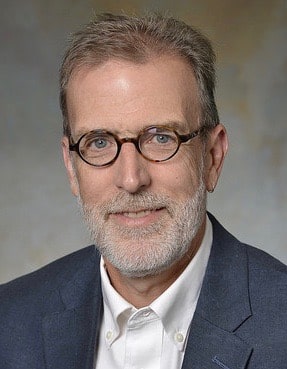
Bruce Blaine, Ph.D., PStat is an applied statistician and Professor of Statistics and Data Sciences in the Department of Mathematics, Computer Science, and Statistics at St. John Fisher College. He currently serves as Vice-Chair of the MCS Division. Dr. Blaine’s research and professional interests include variance heterogeneity, meta-analysis, robust and nonparametric statistical methods, statistical consulting, and statistical computing with R.
Undergraduate Research at PLUM
April 29, 2021
Tony: Today I’m talking with two Computer Science (CS) students to see how Undergraduate Research (UR) can work at an R1 institution. Yiyun is an undergrad and James is a grad student at the University of Maryland (UMD). Let me start by asking how you two know each other?
James: Yiyun and I met through Dr. Hicks, who said Yiyun was interested in working together. We now both work on the same research project, where Dr. Hicks and I provide guidance and direction when needed.
Yiyun: When I was taking intro to programming languages (PL) in my sophomore year, I talked to the instructor about my interest in PL, and showed him some personal projects I did. He asked me to email him a summary, which he forwarded to several CS faculty. Dr. Hicks replied and told me there was a project that I could work on. That’s how I started doing research at UMD.
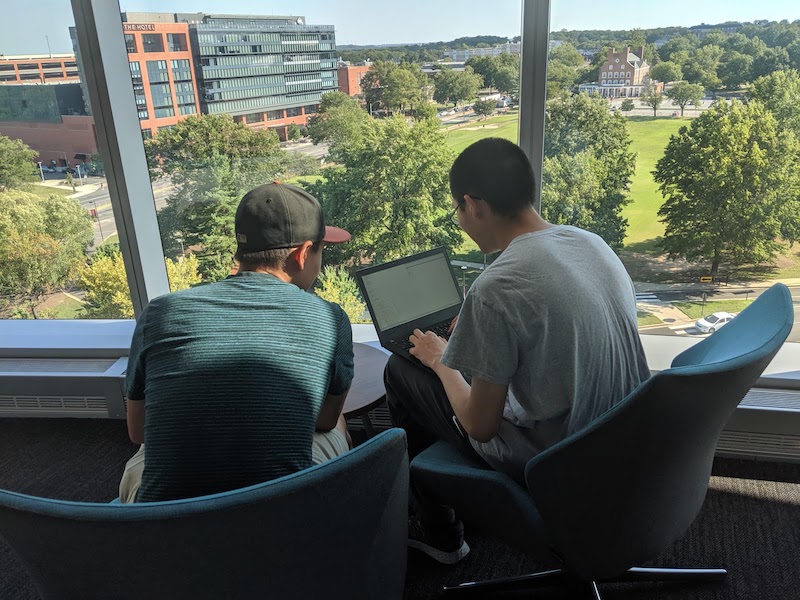
Tony: Can you describe your research group?
James: Sure. The primary research focus at PLUM (Programming Languages Research at the University of Maryland) is in the area of PL. We study type systems, formal methods, and program analysis, and apply PL techniques to other areas like cryptography, quantum computing, security, and incremental computation. Dr. Hicks and Dr. Van Horn lead the group; there are currently two postdocs, five PhD students, a couple MS students, and a few undergrads.
Tony: What does a typical week look like in the life of an undergraduate researcher?
Yiyun: When I started research with Dr. Hicks, James and I had to submit a form which included goals and expected deliverables. As I was researching part-time, I didn’t have much time to allocate, and most of it was spent on engineering proofs. James and I had weekly meetings to check my progress and brainstorm any issues that I couldn’t address independently. During the summer I started researching full-time and was able to spend more time on the project; the major difference was that I spent more time reading papers related to the topic. I also got a desk in the lab, which made it easier for me to communicate with people at PLUM.
Tony: Are you doing research for academic credit?
Yiyun: Yes, there is a UR course and students can choose to take one to three credits, depending on the amount of time they are willing to spend per week. I received three credits, which means I had to spend at least ten hours each week on my research. It is also possible to get paid, but I’m not sure if you can get paid and receive credits at the same time.
Tony: James, did you also start doing research as an undergrad at UMD?
James: Yes, I’d say my experience was somewhat similar. I started working with Dr. Hicks as an undergrad after taking his PL course and went on to complete the combined BS/MS program. I’m now back at UMD working on my PhD. To me, students who start researching as undergrads have many more advantages when applying for jobs and grad school. UR helps students decide what is the right path for them and UMD has a mix of students who pursue either grad school or industry.
Tony: Yiyun, which way are you leaning?
Yiyun: I’m definitely leaning toward academia. I’m more interested in the abstract aspects of computer science. Attending grad school will allow me to explore a broader range of topics without the pressure of having to deliver products ready to use in production. I took a one-credit course where we were introduced to what it would look like to work in industry or academia where Dr. Dave Levin shared his experience of working as a researcher in industry. Based on what he told us, in industry, they care more about how a research project can be beneficial to the company; interesting projects can be dropped if they don’t bring benefits quickly enough. While there are deadlines in academia, I find them to be much less restrictive.
Tony: How have your research opportunities changed your views of being a computer scientist?
Yiyun: It hasn’t really changed my view that much, but it does make me feel more confident. Before I started doing research, I always believed that research in CS was all about innovative ideas and only the extremely lucky or extremely smart students could ever come up with those ideas. Doing research made me realize that research is actually a mix of innovation and engineering. While it is possible to get stuck, we can always find some other part of the project to work on; as we get a better picture of the problem, it becomes easier to find a solution.
Tony: What should faculty know about undergrads doing CS research?
James: In my experience, fostering UR can be a mutually beneficial relationship. Undergrads learn in depth about a new topic and are exposed to research, while faculty members gain a colleague to collaborate with; it also creates opportunities for grad students to gain mentoring experience.
Yiyun: I believe UR can be seen as an extension of the standard undergrad courses. In class, we only learn how to apply the tools to the problems that are designed to be solvable, while in research, we are no longer implementing something that is known to have a solution. The usefulness of certain tools and techniques only becomes evident when trying to solve real world problems. For instance, I was only able to see the benefits of a satisfiable modulo theory-based theorem prover after working on proofs with thousands of lines of code. Even the most challenging exercises from the textbook wouldn’t require that much code. I feel it would have been much more difficult to understand the motivation behind proof automation without actual research experience.
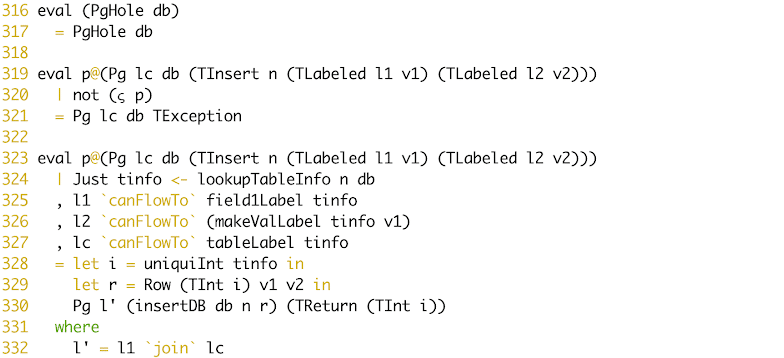

Tony Kapolka has taught the past twenty-three years at Wilkes University, a school offering an undergraduate degree in Computer Science. He’s hosted the Eastern Colleges Science Conference twice, and is a CUR Councilor.
Mentoring Undergraduate Research (UR) in Mathematics, in the Age of Physical Isolation
January 11, 2021
The 2020-2021 academic year is going to be a professional experience individualized for each of us. For some, it will produce more productivity with the chance to focus without distractions, while for others there will be aspects of trauma that will follow into their careers for years to come. As we all have quickly made adjustments to our daily routines, one of the aspects that many faculty are thinking about now is how to do impactful and effective research with undergraduates through a virtual experience. To support these goals, UR SIGMAA and CUR’s Division of Mathematics, Computer Sciences, and Statistics came together shortly after the pandemic shutdown to survey faculty about best practices for remote research and developed a collection of responses and shared resources: Mentoring Undergraduate Research in Mathematics, in the Age of Physical Isolation
We start by acknowledging that whatever you do to support you and your students is the right thing. None of what we have done in the past is going to directly apply. All that said, here are a few ideas for those of you who are hoping to mentor UR virtually:
- Try to meet with your students at least once a week
- Make sure there is a meeting agenda/focus
- Students should have a collaborative online document for sharing their work with peers and mentors. I found a lot of success in using Overleaf as a LATEX editor and daily journal for my students.
- Allow time to chat casually about academic and personal challenges and victories
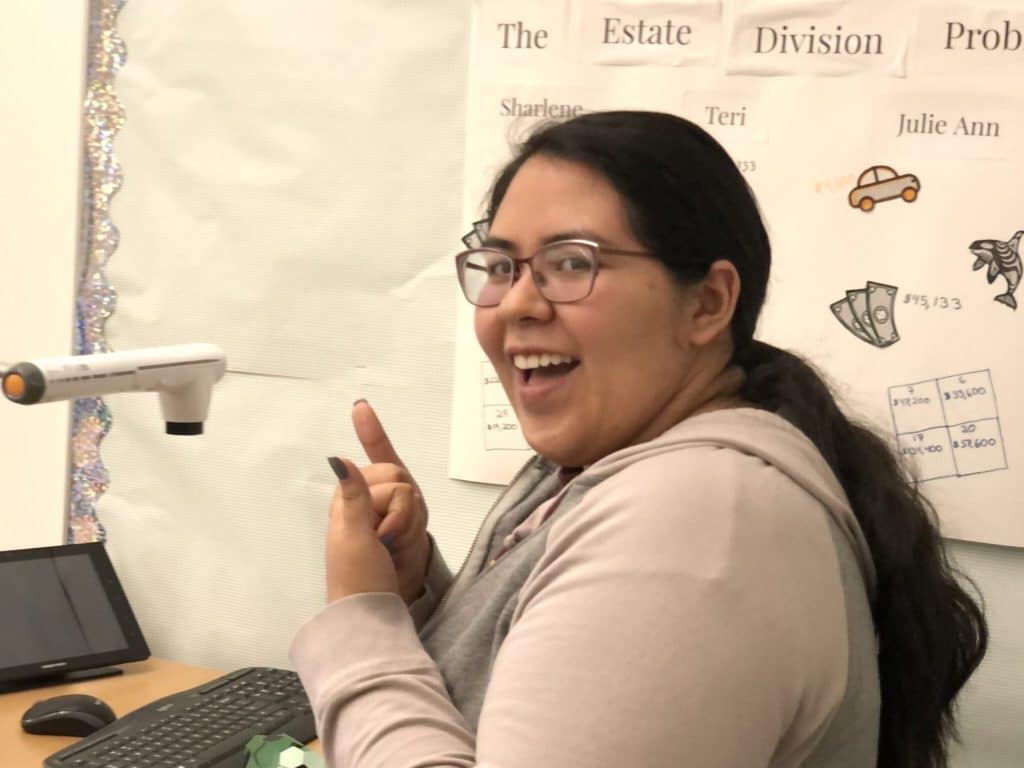
One survey response summarizes the human component of these goals well: “Have frequent discussions with the students to put the research in context, reminding everyone what was previously known and what is not known. When a new conjecture or proof is made, emphasize how no one knows this except us! It’s new knowledge! Students need to hear this. It energizes them! And it helps us, the faculty, as well.”
Thank you to all who contributed to the survey. We welcome additional ideas that we could share. All the best to you in your UR work!
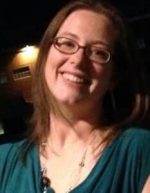
Brandy Wiegers is the Associate Professor of Mathematics and Director of Undergraduate Research at Central Washington University (CWU) in Ellensburg, Washington. Dr. Wiegers has worked with undergraduates on several different research areas: mathematical biology/population dynamics, epidemiological modeling, fluid flow computational models, and evaluative research on the impact of mathematical outreach. Students in these projects prepared papers and presentations on their research that were used for NSF GRFP applications, graduate school applications, and research conferences. In addition to research mentorship, Dr. Wiegers specializes in using undergraduate research experiences to guide further professional development opportunities, most especially supporting students from traditionally underrepresented groups.
Dr. Wiegers’s interest in undergraduate research goes back to her own experiences as an undergraduate, having participated in three different NSF-sponsored REUs that changed the course of her mathematical career including providing a love of exploring interdisciplinary applications of mathematics within the real world
Reflections from SUMRY: Learning to Communicate Mathematics Verbally
November 17, 2019
There are many potential goals undergraduate research mentors have for their students when leading a mathematics REU project. Students might learn new math, prove new theorems, and write and publish a paper. Less tangible, but equally important, are the transferable skills that students develop. Students can improve their mathematical writing (see Allison’s blog post below on this), their collaborative and independent learning, and their presentation skills. One of the stated goals of Summer Undergraduate Math Research at Yale (SUMRY) is to help students improve their oral presentation of mathematics, and we will explore how we work to achieve this.
We know students enter an REU with a wide array of mathematical backgrounds, but they also enter with diverse writing, learning, and oral presentation skills. While most students have the shared experience of presenting a homework problem in class, some students might have been star members of a debate team while others fear public speaking. We hope to improve the presentation skills of all students, regardless of what skills and anxieties they bring with them, and we believe that early and frequent presentations of their mathematical progress and results help accomplish this goal.
Starting in the third week of SUMRY, we have each group give weekly twenty-minute presentations. These usually start as chalk talks and switch to projected PowerPoint or LATEXed Beamer talks later in the summer. At first, these presentations are rough, with students maybe defining relevant objects and stating open questions; these presentations are polished throughout the summer and become worthy of professional conferences. This transformation does not occur by magic, but instead through constant feedback from mentors and other audience members. Mentors understand that even if they themselves do not enjoy presenting, their experience listening to and evaluating presentations is valuable to their students. In addition to advising on presentation content, mentors help students develop and incorporate best practices, such as erasing the board completely, addressing the audience, and using more images and fewer words on slides. Peers and other audience members are also excellent resources for feedback. They help speakers learn which ideas have been clearly explained and which explanations need improvement. It is through a constant conversation around presenting that students improve throughout the summer.
Students Presenting at SUMRY
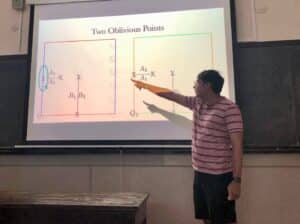
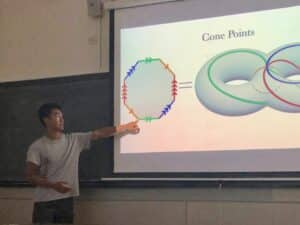
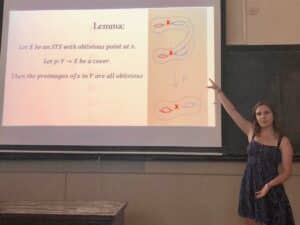
Of course with so many presentations, we need many audiences. In previous summers, students felt as though they were attending so many talks that they did not have time for mathematics. We now have bilateral presentations, where groups are paired each week and present only to each other. The smaller audience allows for more questions and engagement, and this arrangement facilitates feedback for the presenters. Students present to larger audiences when they travel to REU conferences such as the Young Mathematicians Conference (YMC), and also at workshops hosted by Yale. During the last week of the program, we have final presentations where students present to the entire cohort; this serves as a wonderful venue to celebrate our students, their work, and the summer.
This past SUMRY, I mentored a group of students exploring closed geodesics on translation surfaces. By the middle of the summer, they had honed a presentation of their results and traveled to present at their first conference. Coincidentally, the colloquium speaker who visited Yale the day after the students returned from the conference was an expert in this same field. After her talk, the students successfully engaged the speaker in an impromptu presentation of their results. This prompted a detailed discussion of their project with the speaker that led to new research questions and new ideas for how to approach them. By improving their ability to present mathematics verbally, these students experienced firsthand that communicating mathematics is an integral part of the research process.
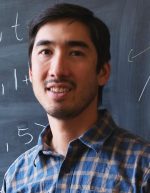
Ian Adelstein is a Lecturer in the Department of Mathematics at Yale University. He has mentored several undergraduate research projects in geometry, mostly through Summer Undergraduate Mathematics Research at Yale (SUMRY), an REU program that he directs. In addition to mathematics, he believes that REUs should foster community, and always budgets plenty of money for pizza.
How I Learned To Help Undergraduate Students Write Collaboratively
June 27, 2019
When an undergraduate student progresses through their first research project, the new skills they are required to develop along the way can be daunting. In mathematics, students need to learn how to: ask good questions, make and test conjectures, find research relevant to their questions, present their findings in a professional setting, and write up their results. This last aspect is often de-emphasized, left for the very end of the project, to be completed in a mad dash. The results are often sloppy at best, completely disjointed and incomprehensible at worst. I know; I have personally struggled with this issue over the years.

In my first experience as an undergraduate research mentor, I had an unusually strong, well-prepared group of students. They were self-motivated to write up their results early and often, and they produced two (yes, two!) publishable papers which were submitted to journals during the last few days of our summer research program, with relatively little guidance from me. I thought this is what all students would do naturally, so I did very little mentoring of the writing process with my next groups of students. As a consequence, one of my next groups never actually wrote up their results. Another group of students wrote up results, but when I went to edit the writing to elevate it to a publishable level, it took me (literally!) years of hair-pulling revising to reach this goal. And improving this group’s writing was by far the least favorite part of my job at the time. Something had to change.
After these experiences, I began to request regular drafts of written results early in the research process. I would ask students to hand me their papers, dutifully mark them up with red ink, and hand them back to the students for revising. However, while my students would attempt to incorporate some of my suggested edits, their revised drafts did not significantly improve. Students would misunderstand my comments and would even ignore suggestions I had painstakingly scribbled in their paper draft’s narrow margins.
One summer, I tried something new. During the first week of the research process, I asked my students to start writing up their results in a shared Overleaf document using the typesetting software LATEX. I then requested that they meet with me weekly for a joint editing session; I booked a room with a projector each week for this one- to two-hour session. When we met, one of the students would project their paper for all of us to see. They would then plant themselves at the computer, ready to implement the edits we’d discuss in real time. Other students might view the paper on their laptops to help with edits or just to simply follow along and make suggestions.
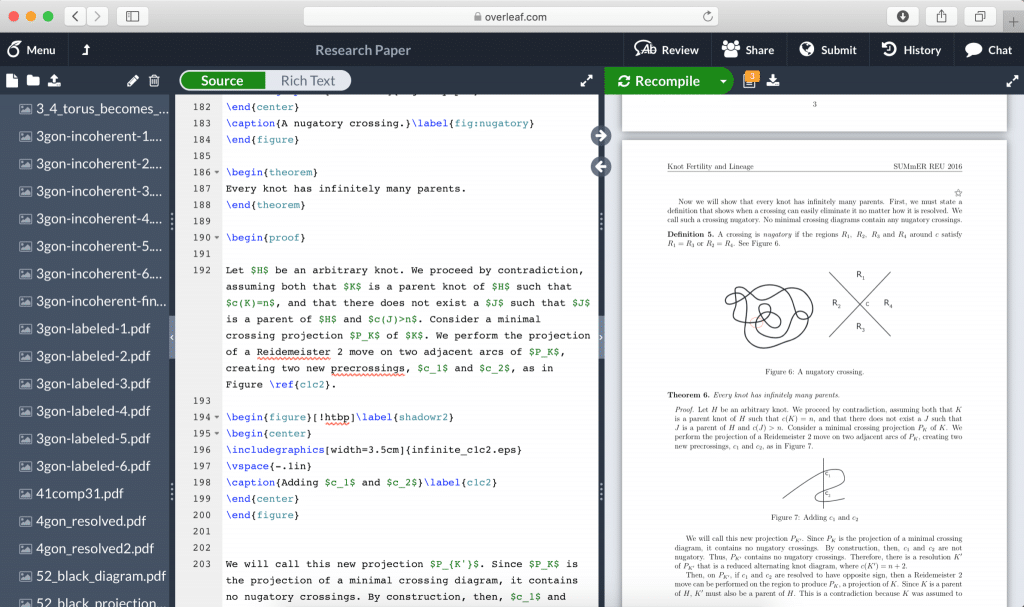
With this new process in place, I’d lead us through their writing, analyzing each line. If a line introduced a definition that wasn’t worded quite right, I might suggest, “In our field, the way someone would typically phrase this is…” If a line introduced a (horrific) new notation, we might discuss what notations might be more natural and what kinds of notation might confuse or disengage a reader. Often, I would know what my students were trying to say, but their wording would have a different meaning. I might point out, “What this sentence actually says is… Is this what you meant? If not, what did you mean to say? How can we change this sentence to get that idea across?” We would also step back and talk about the structure of the paper, reorganizing material as necessary.
Here’s the final result, coauthored with four undergraduates. A significant portion of the body of this paper was written using this editing technique:
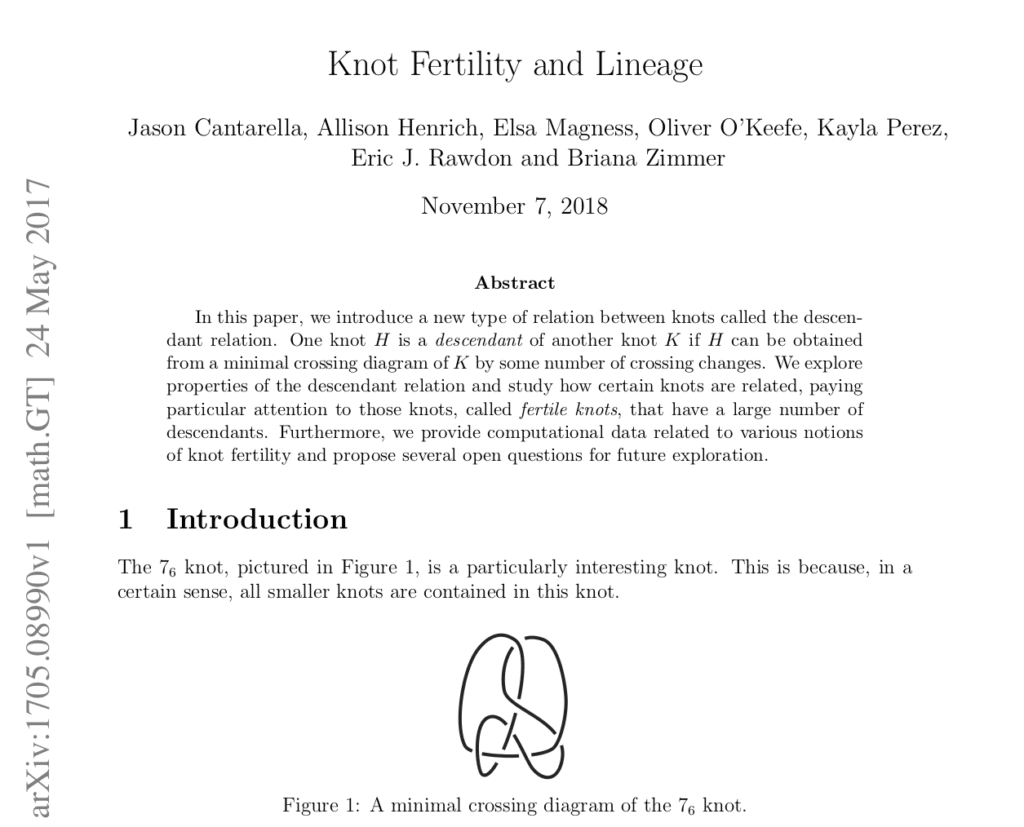
During our editing sessions, my students weren’t just considering a static set of suggestions, scribbled in red ink. They were thinking about various aspects of mathematical writing. They were being educated on writing norms in our field. They were suggesting their own edits instead of blindly replacing their phrasing with my phrasing. The resulting papers have been significantly higher quality. Instead of taking me years of revisions to get a student paper into a publishable form, it would take me months, or sometimes even weeks. Now, I cannot imagine doing undergraduate research without this live editing process.
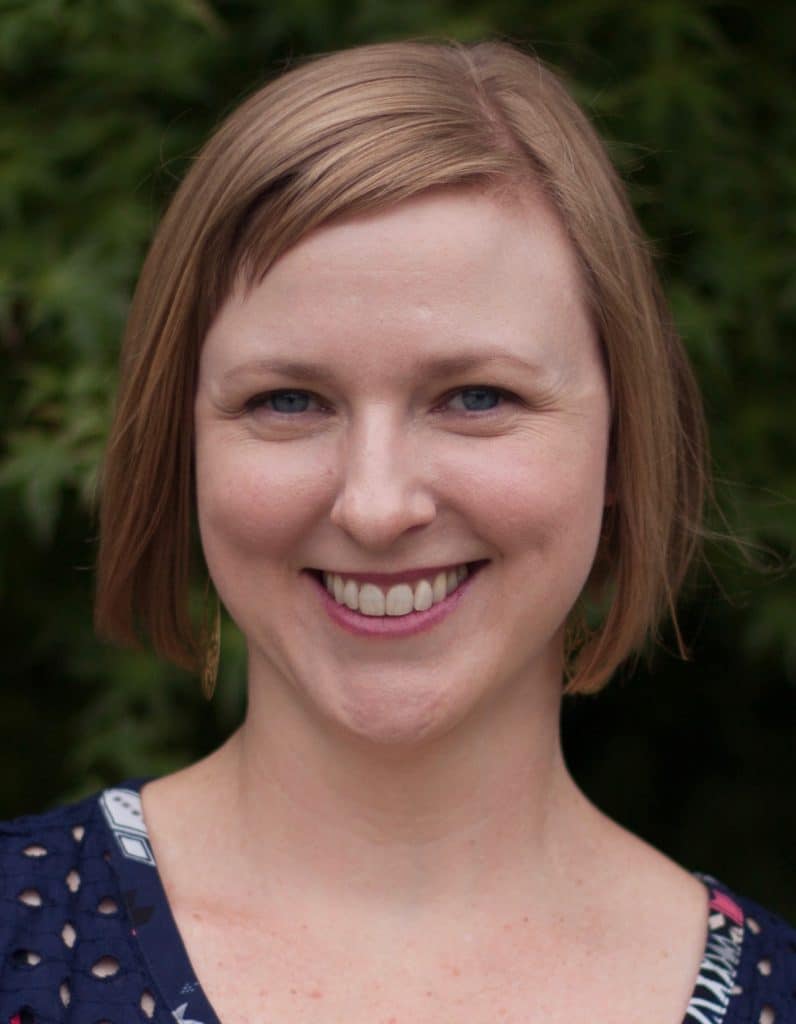
Allison Henrich is a Professor of Mathematics at Seattle University. She has mentored more than 30 undergraduate research students in knot theory projects in the Williams College SMALL REU, the University of Washington REU, in Seattle University’s own SUMmER REU, and in academic year research at Seattle University. From 2015-17, Allison was the PI and co-director of Seattle University’s SUMmER REU, a summer program which aimed to broaden undergraduate participation in mathematics by targeting students in their first two years of college, including students from community colleges. In 2015, Allison won the MAA’s Henry L. Alder Award for Distinguished Teaching by a Beginning College or University Mathematics Faculty Member in 2015.



